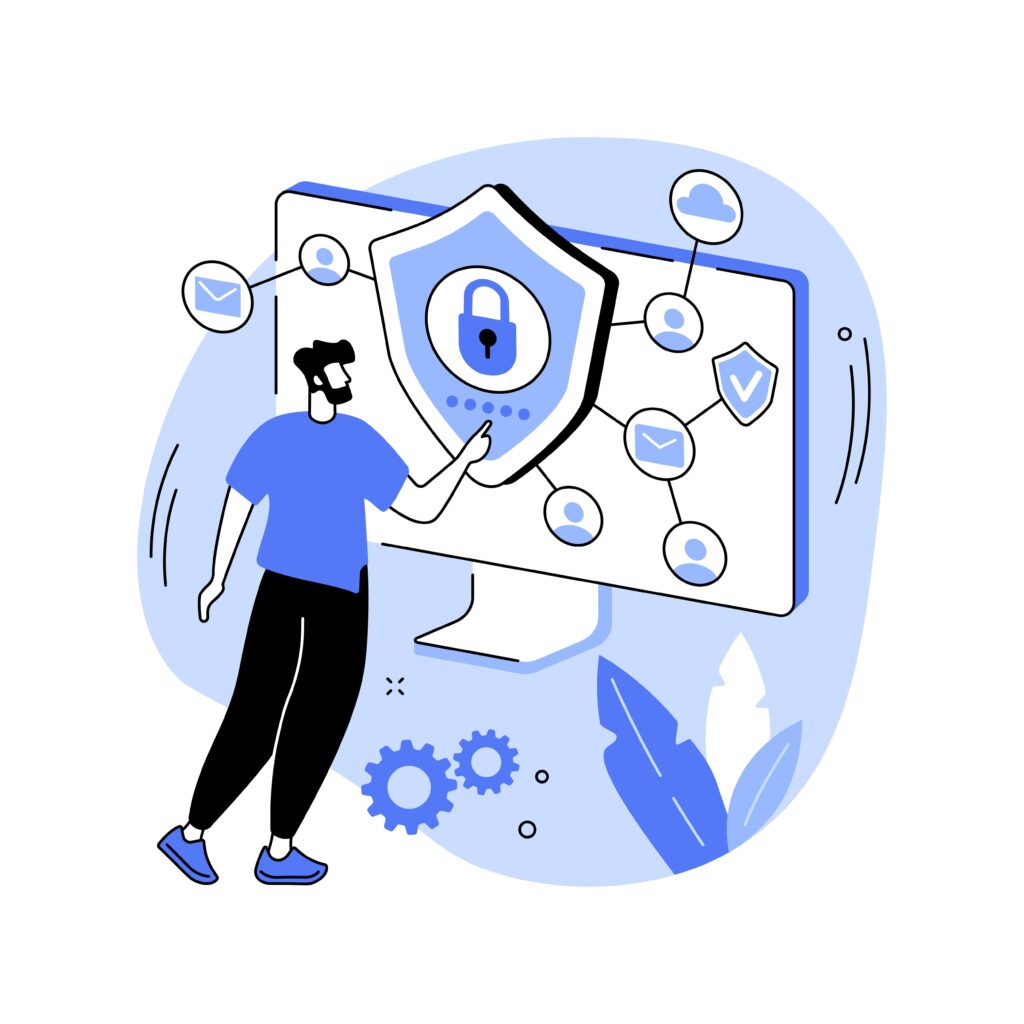

IAM is a critical framework for securing digital resources by defining and managing user identities and access rights. It includes the creation, authentication, authorisation, and auditing of user identities, ensuring that only authorised individuals have access to necessary resources while keeping unauthorised users out. By balancing security and accessibility, IAM helps organisations protect sensitive information, comply with regulations, and streamline access management. Join us as we explore the fundamentals and best practices of IAM, highlighting its importance in today’s digital landscape.

Identity and access management (IAM) is the process of defining and managing the identities and access rights of users and entities in an organisation. IAM involves creating, verifying, authenticating, authorising, and auditing the identities and permissions of users and entities across various systems and resources.
The core principles of IAM include:
IAM is essential for maintaining a secure and efficient organisational environment, protecting sensitive information, and ensuring that only authorised individuals have the necessary access to perform their roles.
What is Identity Access Management (IAM)? | Microsoft Security
2. Why is IAM crucial for an organisation’s security posture?
One reason IAM is a crucial component of cybersecurity is that it enables an organisation’s IT department to strike the right balance between keeping important data and resources secure while ensuring they remain accessible to authorised personnel. IAM facilitates the implementation of controls that grant secure access to employees and devices, while making it challenging or impossible for outsiders to breach. As such, IAM solutions are highly effective in preventing attacks and mitigating their impact.
What is Identity Access Management (IAM)? | Microsoft Security
3. What IAM tools would you recommend?
Azure AD B2C, provided by Microsoft alongside Entra ID, is an IAM tool. It enables users to register for access and store their information securely. This platform facilitates the management of users’ multi-factor authentication (MFA) and password options, while also offering a self-service password reset feature. Users can be limited in their access within the organisation based on the access token provided to them.
4. How do you handle Multi-Factor Authentication (MFA) within your IAM framework?
Multi-Factor Authentication is an integral feature of Azure AD B2C, it ensures improved security for user accounts. Within the platform, users are provided with the flexibility to choose their preferred method of authentication. These options include voice, call, and authenticator functionalities, and they can be adapted to diverse user preferences and needs. This multi-layered approach to authentication adds an extra layer of protection, mitigating the risk of unauthorised access and bolstering overall security measures within the organisation.
User management is conducted through B2C. Access privileges for users can be revoked to prevent them from signing in. This action is achieved through conditional access rules, allowing specific users or those meeting certain criteria to be blocked from accessing the system. Additionally, users can be deleted from the system as needed.
5 .How do you ensure the security of user credentials within your IAM system?
User data is securely stored within Azure, ensuring confidentiality and integrity. Passwords of users are inaccessible to anyone within the B2C tenant, enhancing privacy and security measures. Administrators have the capability to reset passwords as needed, providing an additional layer of control and oversight. Additionally, users can opt for self-service password reset, empowering them to manage their own account security efficiently. This approach not only safeguards sensitive information but also promotes user autonomy and convenience within the system.
6. Can you give an example of a challenge you have encountered when implementing or maintaining an IAM solution?
When using or setting up an IAM solution, one common problem is the different types of applications and vendors that customers use, which have different security protocols like OIDC and SAML. This makes integration hard, because it needs to adjust to different needs. Azure AD B2C solves this problem by offering adaptable integration with different protocols and applications. Also, the platform lets you customise how authentication works for different vendors. This adaptability makes integration smooth and improves the IAM solution’s ability to handle the diverse range of applications and vendors.

Ready to level up your IAM? Contact Spanish Point and talk to Shane today!
By managing user identities and access rights, IAM ensures that only authorised individuals navigate sensitive data and resources. In the ever-evolving complexities of cybersecurity, IAM remains a key piece when safeguarding sensitive information, ensuring compliance, and fortifying organisational data.